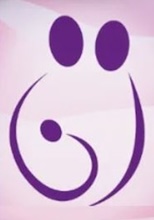What is Osteopathy?
The word “Osteopath” comes from the Greek word “Osteo” meaning bone, and “Patheia” meaning feeling, so it literally translates to bone-feeling. Osteopathy is a hands-on-therapy based on the theory that some body problems can be alleviated by the manipulation of the skeleton and massage of the muscles.
What is a Paediatric Osteopath?
This is an Osteopath who has undertaken extra training to focus on the treatment of babies and children.
What is Cranial Osteopathy?
This is a technique that Osteopaths use which deals with the bones of the skull and also the very small changes that happen in all the tissues of the body called the “Cranial Rhythm”. Osteopaths believe that any disturbance to the body from birth, accidents, illnesses and operations can disrupt this cranial rhythm and this can later lead to problems in the body. A Cranial Osteopath is trained to locate any disruption and bring the cranial rhythm back to normal.
What is the difference between an Osteopath and a Chiropractor?
Osteopathy and Chiropractic have a common history. In 1874 in America, Dr A. T. Still founded Osteopathy and one of his students was Dr D. D. Palmer who went on to found Chiropractic 21 years later.
Osteopaths and Chiropractors have similar training, treat similar conditions and can use similar manipulation techniques. However, not all Chiropractors have training in Paediatrics or Cranial techniques; neither do all Osteopaths.
Each practitioner will focus their practice on what they are interested in treating which can be very wide. Some practitioners treat “From the cradle to the grave”, meaning they treat all ages and all conditions, and other practitioners like to specialise in something that interests them like sports injuries, breathing problems, the elderly, pregnant women, or babies and children.
Therefore, the most important thing for the patient to ask is what is the training and experience of the practitioner.
How old does my baby need to be to start treatment?
The sooner the better, as it is never too soon to start treatment, and almost never too late.
Some babies come to see me at a few days old to help get feeding established if perhaps they have a Tongue Tie or a squashed face from birth. Other babies come around 2 weeks old for a check-up after birth if they are not settling or are crying for long periods of time. Others will come at 6 weeks if they have constipation, trapped wind or reflux, and others at 4 months for sleep regression (usually due to teething problems).
What does the treatment feel like?
Cranial treatment is very gentle so it is safe and suitable for babies. It can bring about a feeling of deep relaxation and babies will often fall asleep during treatment.
